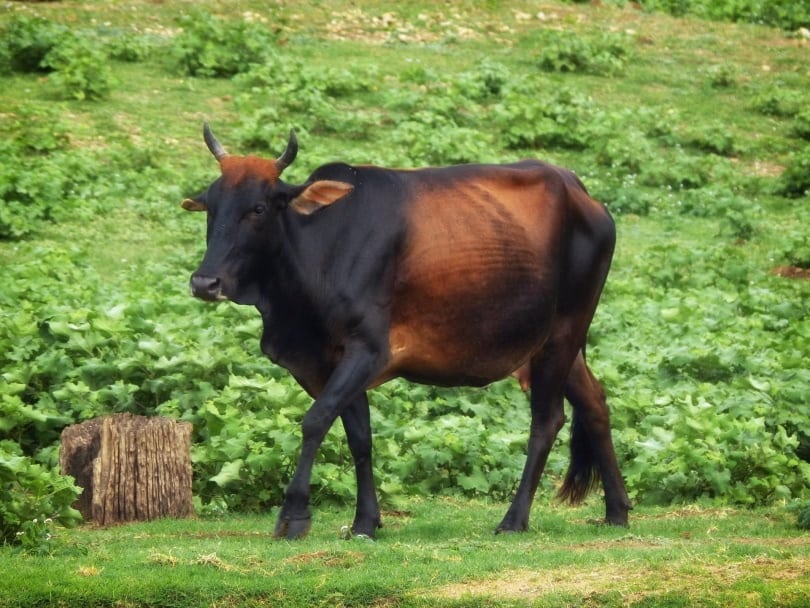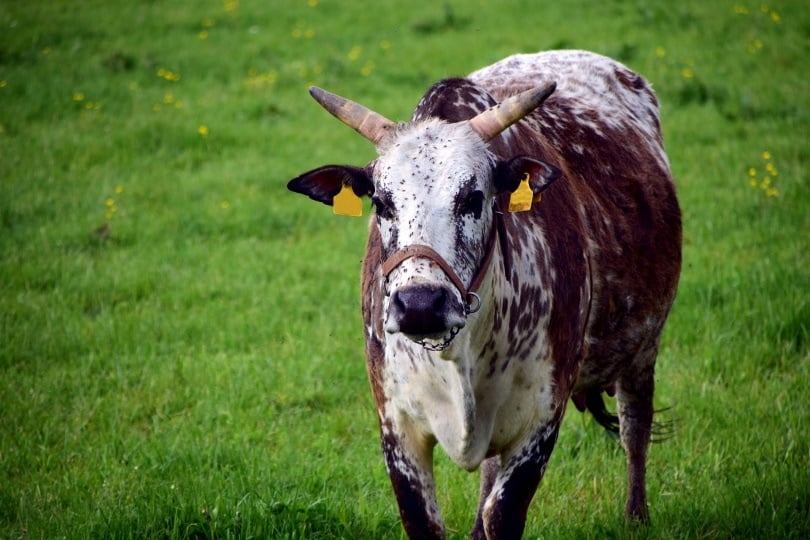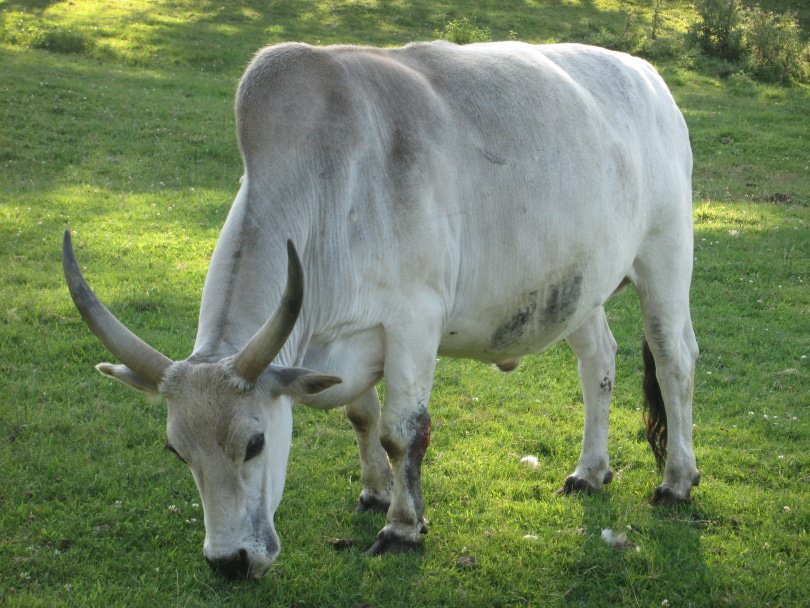Zebu cattle, or humped cattle, originates from India but are also found in Brazil, the US, and Africa. They are usually red or gray, have horns, and are used for their meat and milk, as well as being used as draft animals. They are known for their tolerance of heat and are considered hardy cattle that are also resistant to disease and parasites.

Quick Facts about Zebu

| Breed Name: | Zebu |
| Place of Origin: | India |
| Uses: | Milk, meat |
| Bull (Male) Size: | 400-600 lbs |
| Cow (Female) Size: | 300-450 lbs |
| Color: | Gray, red |
| Lifespan: | 20 years |
| Climate Tolerance: | Heat tolerant |
| Care Level: | Easy to moderate |
| Production: | Milk, meat |
Zebu Origins
The Zebu originates from India, although the original breed did not have the distinctive hump that the Zebu is known for today. Paintings on rocks and pottery show that the Zebu has existed since around 2000 BC and were exported to Africa in around 1000 AD. They were also exported to Africa in the 18th century and to Brazil in the late 19th Century. The Zebu is often described as being the world’s oldest breed of domestic cattle.

Zebu Characteristics
They are heat tolerant, which makes them popular in hot countries like Brazil, where they are reared primarily for their meat because they survive the tropical temperatures better than European breeds of cattle.
If the breed is frequently handled, they will grow to accept human contact and proximity and they can be considered quite docile. However, cows can be maternal and look to protect their offspring, so care should always be taken when around new mothers.

The breed is considered low maintenance. There are few breeding problems because calves are considered small.
The zebu is not only hardy but strong which means that it can also be used as a drafting animal to pull carts and machinery and to carry packs and equipment.
As well as being highly tolerant of heat and humidity, the zebu is also resistant to parasites and disease, which makes them a good choice of cattle in a lot of challenging terrains and areas.
- Also See: Beef Shorthorn Cattle
Uses
The Zebu is primarily used for its meat production and is favored in tropical climates over European cattle breeds because of its high tolerance of heat and humidity. It is also used for milk production, but Zebu cows do not produce a lot of milk and most of it is given to the calves to ensure their survival. Their strength means that the zebu is also used for draughting because they are more than capable of being able to carry heavy weights over long distances.
Appearance & Varieties
The breed is usually gray or red in color, although this can vary from herd to herd as well as from country to country. They have horns, are known for having loose skin, and their ears are large. They also have a hump, which saw them being given the unofficial name of the humped cattle.
Originally, the Zebu did not have the hump, but this was bred into them as different breeds of cattle were merged and introduced for their different benefits.
There are known to be around 75 breeds of Zebu, including African and Indian breeds. These differ according to whether they have been bred for meat production or milk production.
Population/Distribution/Habitat
The precise number of Zebu is not known because not all the cattle are registered or known. However, there are believed to be 2 million in the US, 155 million in Brazil, and a further 270 million in India.


So, Are Zebu Good for Small-Scale Farming?
Zebu can be considered a good choice of cattle for small-scale farming, especially in tropical climates where temperature and humidity levels are high. They are hardy, resistant to disease and parasites, and they can become quite docile if they are around humans often enough.
The zebu is considered the oldest breed of domestic cattle in the world. They are found in India, Africa, Brazil, and the US, and are used primarily for their meat but may also be bred for milk production and for draughting use.
Featured Image Credit: Piqsels
